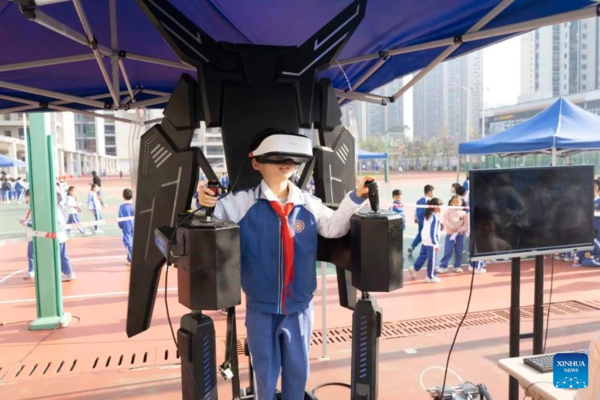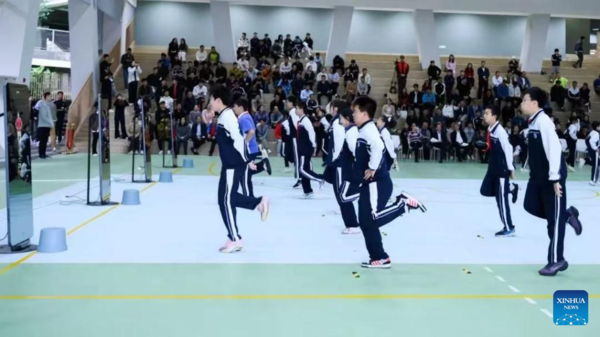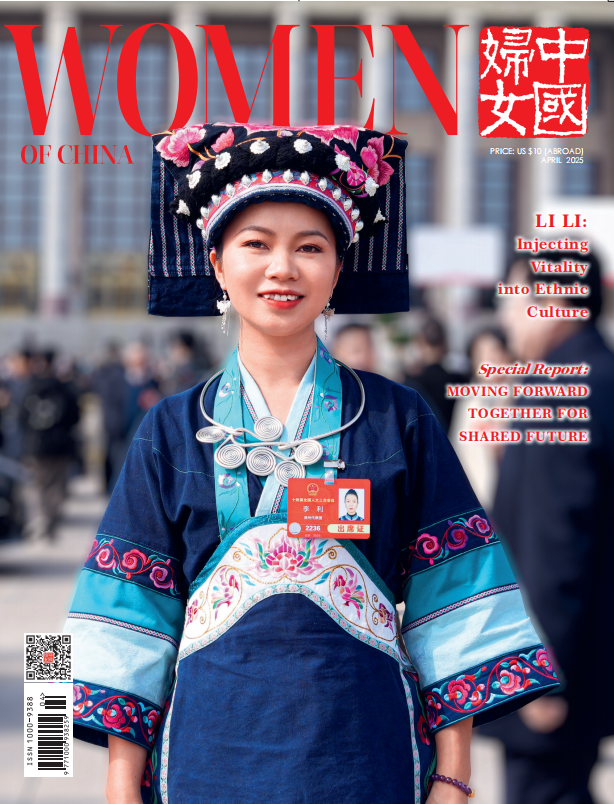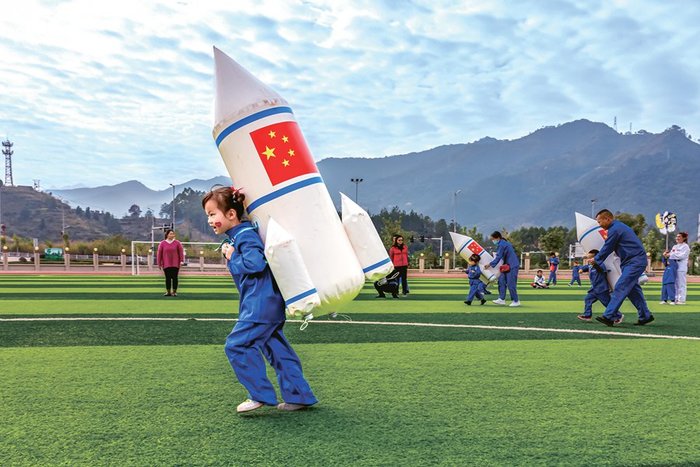China Strives to Cultivate Tech-Savvy Generation in AI-Driven Classrooms
 |
| A student operates an AI-powered VR device at Shenzhen Xiantian Foreign Language School in south China's Guangdong Province, March 21, 2025. [Xinhua] |
GUANGZHOU, May 20 (Xinhua) — In a junior high school classroom in the southern tech hub of Shenzhen, a 14-year-old student surnamed Geng deftly adjusted the parameters of a neural network model, having previously used his AI-powered "study buddy" to refine the narrative flow of his essay.
In this classroom, students have learned to see the world through the eyes of a neural network. They were taught how AI models recognize digits from 0 to 9 based on their unique shapes like identifying a "7" by its vertical line and horizontal stroke, or a "2" by its curved body and top bar.
Once confined to tech startups, such a scenario is now becoming a required course in some Chinese schools, as the nation pushes to make AI literacy as fundamental as math or literature.
China's education authorities have pledged to universalize AI education in primary and secondary schools by 2030.
In Shenzhen's Longgang District, 18 schools were selected to pilot AI-driven projects, including personalized homework systems and AI-powered essay grading. After two months of data training, the AI system, developed by Feixiang Xingqiu, is now able to tailor assignments to each student's needs.
In the first three months of 2025, the Beijing-based education tech startup piloted its digital courses in over 1,000 schools, reaching 150,000 students nationwide.
"AI simulates the formation of human intelligence through learning, integrating knowledge and generating cognition. Therefore, the first field it embraces is education," said Xiong Zhang, a computing professor at Beihang University.
Yet, early introduction to AI for children is debated. Many experts warn that chatbot interactions may weaken a child's natural sense of wonder.
"In an era where AI can replicate human knowledge, education should shift its emphasis," said Bai Fengshan, a professor from Tsinghua University.
"Given this shift, education should prioritize 'exploring the unknown,' especially in early childhood, rather than emphasizing the acquisition of existing knowledge," explained Bai, cautioning against premature AI exposure for children.
At the Qing Shui School in the western suburbs of Beijing, educators are designing lesson plans to leverage the strengths of AI while mitigating its potential drawbacks.
Fifth-graders were initially allowed to observe how giant archer ants find their nest in the wild. Then, they used DeepSeek to design experiments with sugar water "odor bridges" and alcohol "odor erasers" to guide ants along paths.
However, the AI plan failed to simulate real ant nest odors accurately, causing the ants to deviate.
After refining their design, the students successfully replicated ant colony algorithms and learned that these algorithms can optimize 5G base stations, robotic collaboration and community logistics routes.
The core value of AI-driven educational reform lies in cultivating "authentic problem solvers" for the intelligent age, said Cao Yanyan, an education official in Mentougou District of Beijing.
"The goal is for students to acquire not just knowledge, but also systematic thinking and innovative methodologies," Cao added.
 |
| Students attend a PE class with AI-powered devices at Shenzhen Longgang District Arts and Science School in south China's Guangdong Province, Jan. 3, 2025. [Xinhua] |
(Source: Xinhua)
Editor: Wang Shasha
Please understand that womenofchina.cn,a non-profit, information-communication website, cannot reach every writer before using articles and images. For copyright issues, please contact us by emailing: website@womenofchina.cn. The articles published and opinions expressed on this website represent the opinions of writers and are not necessarily shared by womenofchina.cn.








.jpg)

 WeChat
WeChat Weibo
Weibo 京公网安备 11010102004314号
京公网安备 11010102004314号